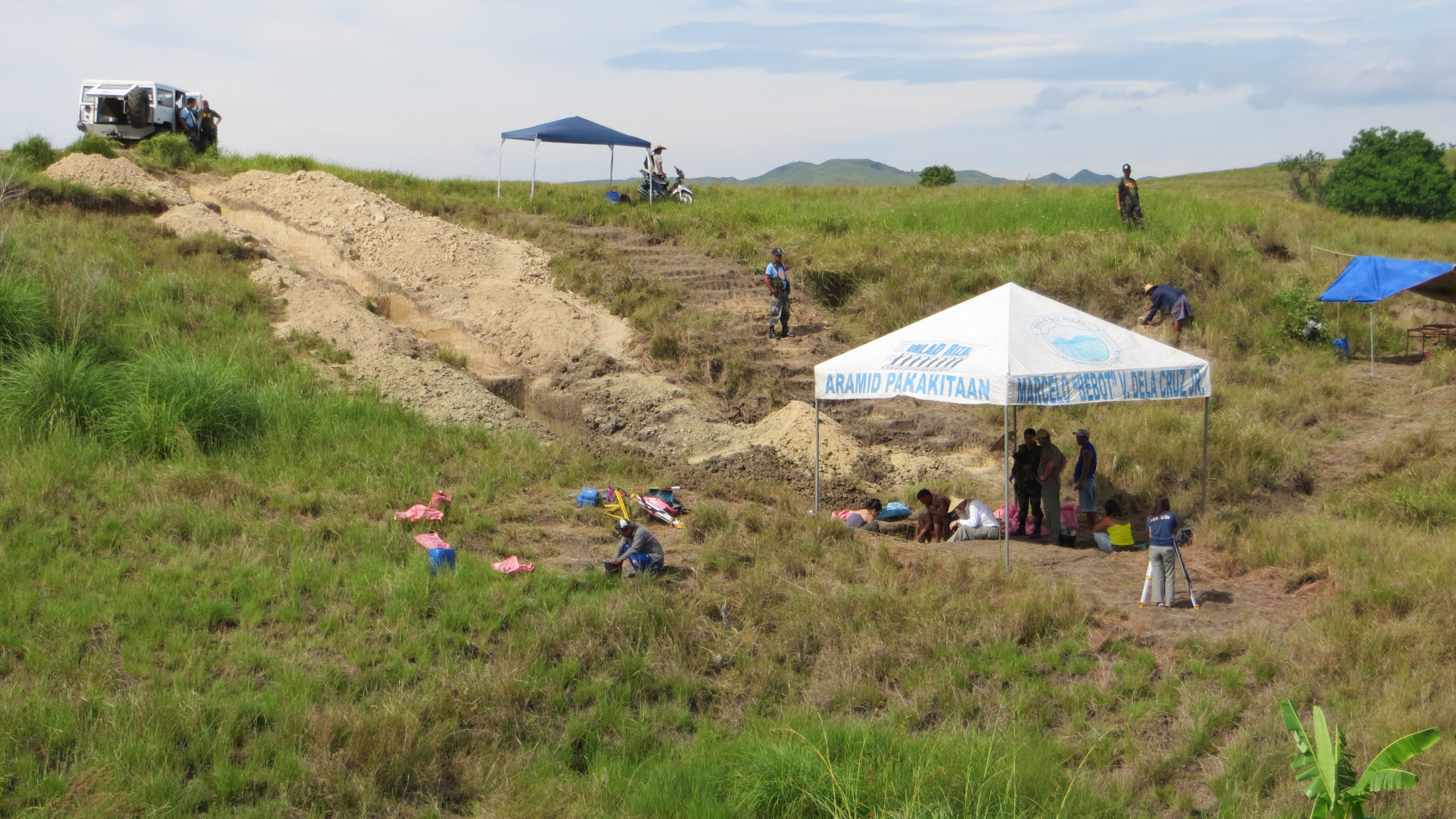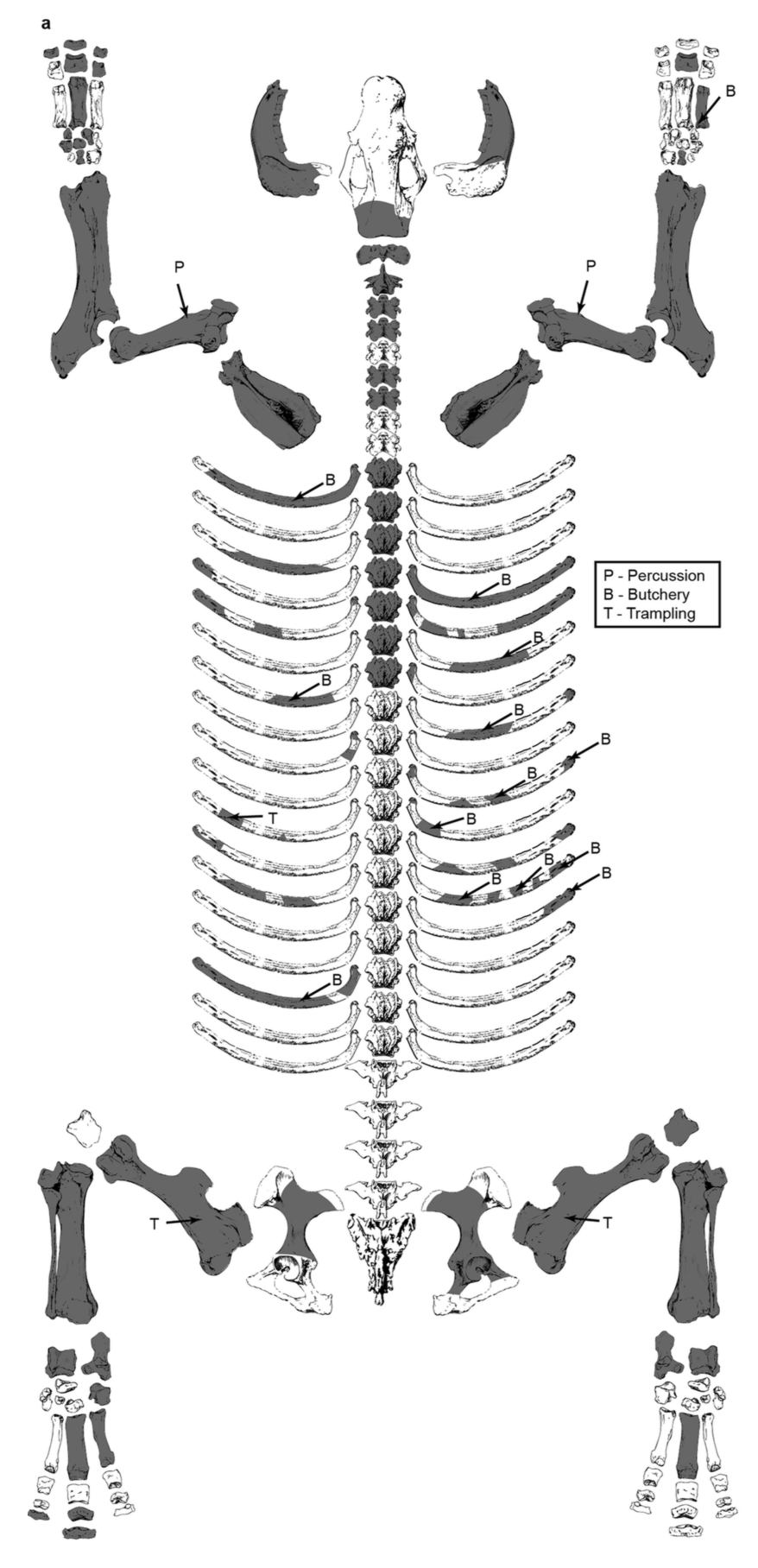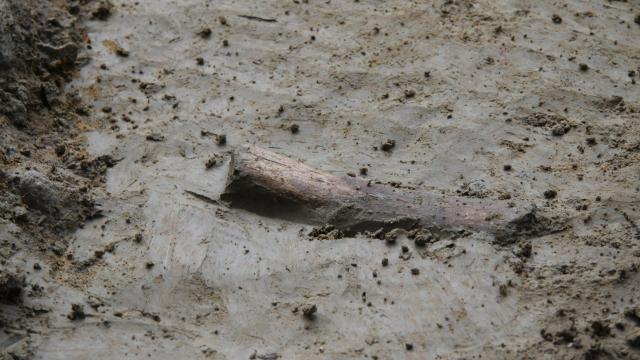Our species, Homo sapiens, weren’t the first humans to leave Africa – not by a long shot. The remarkable discovery of a 709,000-year-old butchered rhino fossil in the Philippines shows that so-called archaic humans were romping around the islands of southeast Asia a full 400,000 years before our species even existed.
That premodern humans had made their way to Luzon, the largest island in the Philippines, by 709,000 years ago is not a complete shocker. Prior archaeological discoveries have suggested that early humans, likely a form of Homo erectus, had settled in southeast Asia as far back as 1.5 million to 1.8 million years ago, with evidence of archaic humans living in Java and Sumatra by around 500,000 to 800,000 years ago. Evidence of stone tools dating back to similar time periods have also been found scattered among the remains of prey animals on the Southeast Asian islands of Sulawesi and Flores.
As for the Philippines, however, the oldest trace of human activity came in the form of a single foot bone dating back a “mere” 67,000 years. But as new evidence published today in Nature demonstrates, early humans had made their way to this island long before then; Luzon is now the third major southeast Asian island to have hosted early humans (Sulawesi and Flores being the other two). Incredibly, these venturous hominids somehow made their way to the island around 709,000 years ago, long before anatomically modern humans arrived on the scene, which happened no earlier than 100,000 years ago.

The excavation site. Photo: Thomas Ingicco, Mission Marche aux Philippines
The new evidence was uncovered at the Kalinga site of the Cagayan Valley in northern Luzon. A team led by Thomas Ingicco from the Natural History Museum in Paris analysed the 57 knapped stone tools and 400 bones found buried within the clay-rich bed. These bones belonged to brown deer, monitor lizards, freshwater turtles, and stegodons (an extinct mammal similar to elephants and mammoths), but the real prize was the discovery of a nearly complete rhinoceros with signs of butchering. Thirteen of the rhino’s bones exhibited cut marks, and two bones showed evidence of being struck to release the precious bone marrow within. Using four different dating techniques, including electron-spin resonance methods, the researchers dated the items to between 777,000 to 631,000 years ago, with the most likely date being 709,000 years ago.
So in addition to making their way to Luzon, these primitive humans also had the skill and wherewithal to hunt rhino. That’s amazing.

Drawing showing the uncovered rhino bones (in grey). Illustration: T. Ingicco et al., 2018/Nature
“This work appears scientifically robust,” said Mike Morley, an archaeologist at the University of Wollongong in Australia who was not involved in the new research. “The stone tools and the cut marks on the bones certainly point to a butchery site, with the bones being fractured and scored presumably during the dismembering of the animal, leaving characteristic signs of this butchery on the bones; the hominins who did this remain unknown, however, as there are no hominin bones associated with the archaeological materials and fossils.”
Morley told Gizmodo that the dating methods used “appear to be sound.” The dates offered by the various techniques were in agreement, and were calculated using both the fossils and the sediments within which they were recovered, he said.
This evidence pushes back the proven period of colonization of the Philippines by hundreds of thousands of years. What’s more, it shows that the Philippines played an important role in enabling the southward movements of early humans into Wallacea, the archipelago of oceanic islands between the Asian and Australian continents. How these primitive humans managed to accomplish these incredible migratory feats remains a mystery.
One possibility is that the ancestral population of Luzon arrived deliberately using some sort of watercraft.
“I think this is unlikely, but not everyone agrees,” Gerrit van den Bergh, a co-author of the new study and a senior lecturer at the University of Wollongong, told Gizmodo. “I tend to see those early human colonization events as extremely rare ‘freak events’ [possibly] caused by tsunamis.” He pointed to the 2004 Indian Ocean tsunami as a modern day example, a disaster from which some survivors were rescued from natural rafts after spending more than a week drifting in the ocean. As for a small group of people making landfall on an island and establishing a population, such an event, though rare, is possible over the course of a million-year period, he said.
Another interpretation is that Luzon was once connected to the Asian mainland by a land bridge, likely during a period of low sea level triggered by the Ice Age. Based on the existing evidence, however, van den Bergh believes this is an unlikely scenario.
The other big question posed by this finding is the nature of the ancestral population itself, and the species to which they belonged. As noted, Homo erectus was already well established in adjacent continental areas, but there are other possibilities as well.
“The usual assumption would be that the tool makers at the new site were Homo erectus, but the discovery of Homo floresiensis fossils on Flores [the so-called ‘Hobbit species’] and genomic evidence for ‘Denisovans’ in Mainland and Island Southeast Asia means that one can’t be sure without fossil evidence,” Graeme Barker, an archaeologist at the University of Cambridge, told Gizmodo. “It’s important evidence to add to an exciting and fast-changing picture of the successive human dispersals into the region.”
Adam Brumm, an archaeologist at the University of Wollongong, also not involved in the new study, says it’s clear from discoveries on Flores and Sulawesi, and now Luzon, that early forms of humans that inhabited the world long before our own species was capable of crossing major deep-sea gaps to reach remote and isolated islands – even if by sheer accident.
“We don’t know how they did this, but we know from fossil discoveries on Flores that hominins that were genetically isolated on this small Wallacean island around one million years ago survived for hundreds of thousands of years and underwent bizarre and unexpected evolutionary changes, such as shrinking dramatically in both body and brain size,” Brumm told Gizmodo. “We may expect to find evidence for similarly long and complicated histories of insular hominin evolution in the islands of Sulawesi and Luzon when hominin fossils are eventually available for these regions; but, most importantly, in each instance the island environments and ecosystems are dramatically distinct, so we can’t easily predict the outcome of all these unique evolutionary ‘experiments’ on different Wallacean islands.”
Another big question is whether these archaic humans, who evolved for hundreds of millennia on Sulawesi, Flores, and Luzon, lasted long enough to come face-to-face with the first anatomically modern humans to reach these islands.
“We now know from ancient DNA studies that our species interbred with at least two – but probably more – archaic hominin species encountered by modern humans outside Africa: Neanderthals and Denisovans,” said Brumm. “Could there have been other gene flow events [i.e. interbreeding] involving archaic humans in Wallacea?”
It’s humbling to think that all of this was going on while the ancestors of Homo sapiens were still evolving in Africa. Our species may have been late to the show, but Homo sapiens is the only human species still standing. But that’s not to diminish the remarkable run achieved by these intrepid hominids, who existed outside of Africa and adapted to new environments for well over a million years. As van den Bergh told Gizmodo, “premodern humans were more resilient, mobile, and adaptable than we could have ever imagined.”
[Nature]
